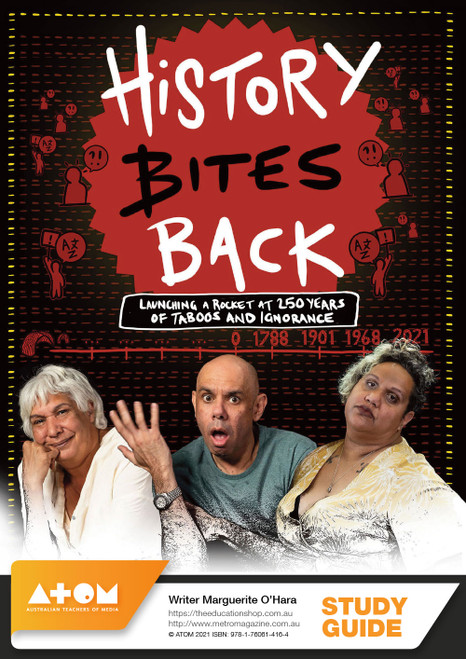Product Overview
Overview
Since the 1970s, Australia has asserted itself as a proudly multiracial and multicultural country with boundless plains to share. Decades after the first wave of non-European migrants settled at the end of the White Australia policy, what does Australia look like for their children who are at the crossroads of two identities – that of their parents' homeland and Australia?
For second-generation artists of non-European background, defining themselves – in their art and beyond – can be a difficult task. Third Culture Kids explores these questions through the stories of six Australian artists from non-European backgrounds by revisiting a childhood memory that explores growing up in two worlds and how that moment shaped and informed their arts practice.
Using a cross between narrative and factual storytelling, the visual style of Third Culture Kids is a montage that includes interviews, archive and recreations that enter the imagination of the artist to create a visual feast that seeks to reflect the melting pot that is contemporary Australia and what it means to belong.
Curriculum Links
Visual Arts:
Years 9 and 10
• Conceptualise and develop representations of themes, concepts or subject matter to experiment with their developing personal style, reflecting on the styles of artists, including Aboriginal and Torres Strait Islander artists (ACAVAM125)
• Manipulate materials, techniques, technologies and processes to develop and represent their own artistic intentions (ACAVAM126)
• Develop and refine techniques and processes to represent ideas and subject matter (ACAVAM127)
• Plan and design artworks that represent artistic intention (ACAVAM128)
• Analyse a range of visual artworks from contemporary and past times to explore differing viewpoints and enrich their visual art-making, starting with Australian artworks, including those of Aboriginal and Torres Strait Islander Peoples, and consider international artworks (ACAVAR131)
Years 11–12
Links to senior Visual Arts curriculum in different regions.
English:
Year 10
Responding to literature
• Evaluate the social, moral and ethical positions represented in texts (ACELT1812)
Creating literature
• Create literary texts that reflect an emerging sense of personal style and evaluate the effectiveness of these texts (ACELT1814)
Interpreting, analysing and evaluating
• Identify and analyse implicit or explicit values, beliefs and assumptions in texts and how these are influenced by purposes and likely audiences (ACELY1752)
Creating texts
• Create sustained texts, including texts that combine specific digital or media content, for imaginative, informative, or persuasive purposes that reflect upon challenging and complex issues (ACELY1756)
Years 11–12
Links to English in Units 1–4 in terms of analysing argument and point of view oral presentations
Media Arts:
Years 9 and 10
• Experiment with ideas and stories that manipulate media conventions and genres to construct new and alternative points of view through images, sounds and text (ACAMAM073)
• Manipulate media representations to identify and examine social and cultural values and beliefs, including those of Aboriginal and Torres Strait Islander Peoples (ACAMAM074)
• Develop and refine media production skills to integrate and shape the technical and symbolic elements in images, sounds and text for a specific purpose, meaning and style (ACAMAM075)
• Plan and design media artworks for a range of purposes that challenge the expectations of specific audiences by particular use of production processes (ACAMAM076)
• Analyse a range of media artworks from contemporary and past times to explore differing viewpoints and enrich their media arts making, starting with Australian media artworks, including media artworks of Aboriginal and Torres Strait Islander Peoples, and international media artworks(ACAMAR079)
Years 11–12
Links to senior Media curriculum in different regions.
History:
Year 10
Depth study – Migration experiences (1945–present)
• The impact of changing government policies on Australia's migration patterns, including abolition of the White Australia Policy, 'Populate or Perish' (ACDSEH145)
• The contribution of migration to Australia's changing identity as a nation and to its international relationships (ACDSEH147)
Drama:
Years 9 and 10
• Improvise with the elements of drama and narrative structure to develop ideas, and explore subtext to shape devised and scripted drama (ACADRM047)
• Perform devised and scripted drama making deliberate artistic choices and shaping design elements to unify dramatic meaning for an audience (ACADRM051)
• Structure drama to engage an audience through manipulation of dramatic action, forms and performance styles and by using design elements (ACADRM050)
General capabilities:
• Critical and creative thinking
• Personal and social capability
• Intercultural understanding
• Ethical understanding







